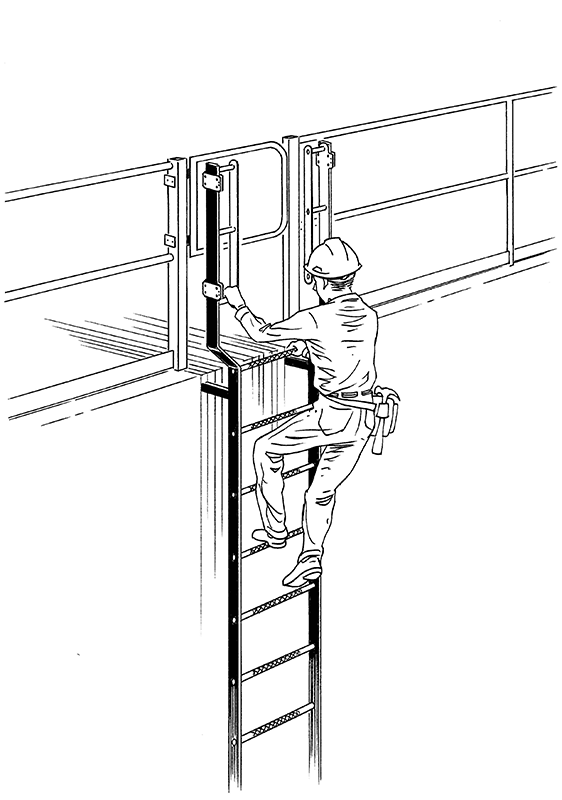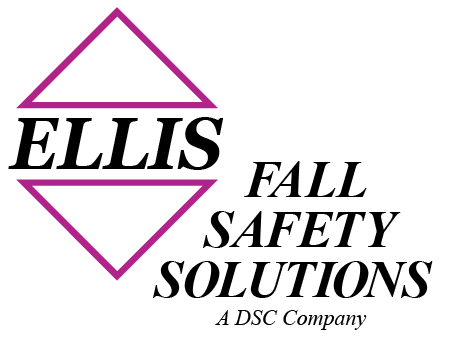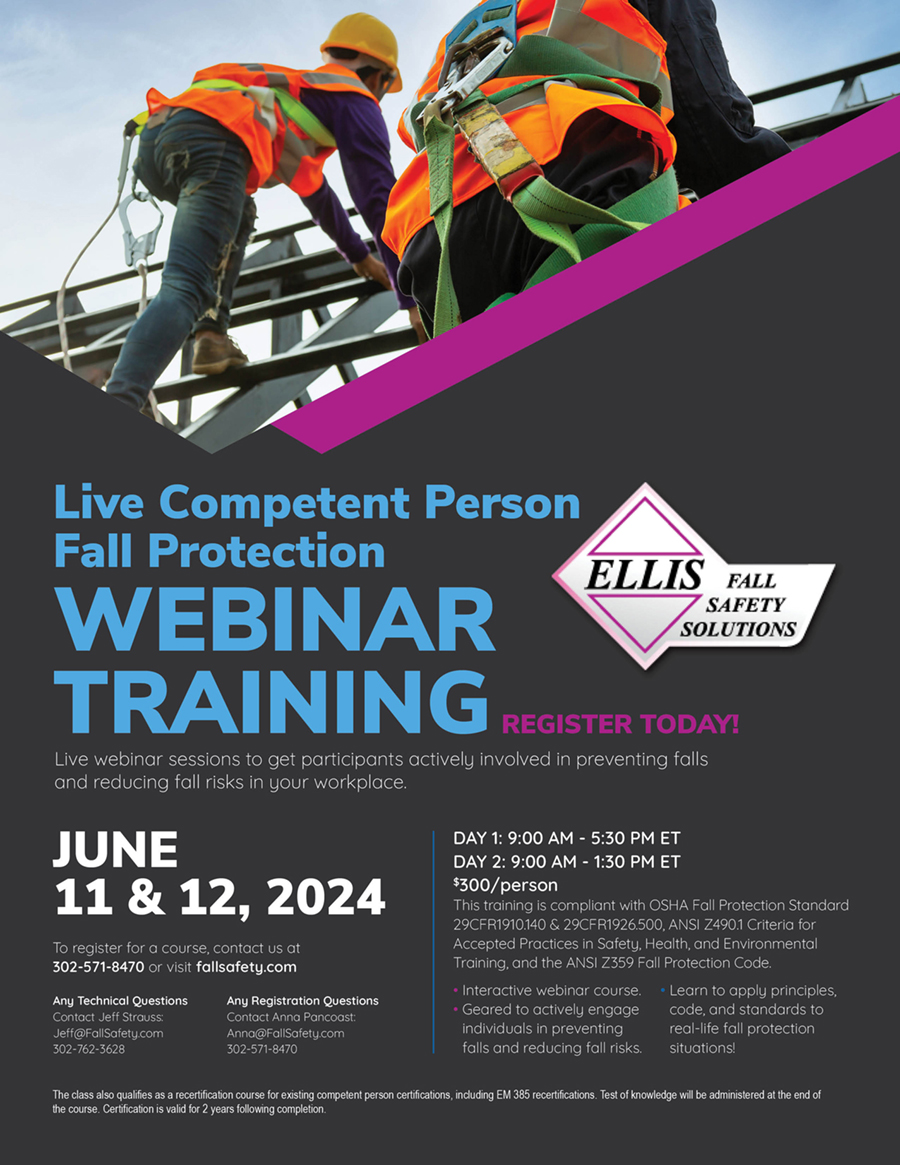Three Point climbing without fall protection e.g. (movement at height with two hands & one foot alternating with two feet & one hand) can be better analyzed as follows:
1. Three Point Stance: American football term readiness to start play; FMCSA/DOT access points for truckers to/from the cab with at least two digits & no cutting of the finger at the second digit.
2. Three Point Contact: any point of body contact plus two feet position to climb and work balanced hands-free (no performance based definition).
3. Three Point Control: Hand or hands on a round rung or horizontal grab bar and a horizontal round or flat level for foot or feet. Ideal round grab bar or rung for optimal handhold performance is 1″ diameter based on a handhold coupling study of 36 subjects by Justin Young, Kettering University, Michigan, link: http://hdl.handle.net/2027.42/84452 .
Vertical handholds slide during a fall. Handhold shapes like angle iron fail to arrest dynamic falls both vertically and horizontally. Bottom line is that dynamic force on the hands arresting body weight is surprisingly large, and the 1″ diameter horizontal bar is the best shot we have for safe performance on structures at height. Designers need to understand this human limitation when designing tower structures, and tower climbers need to understand no free-climbing at any time.
Examples of climbing are shown.
Note: please wait a few seconds as sketches show movement.
THREE POINT CONTROL-GRABSAFE FOR PORTABLE LADDER
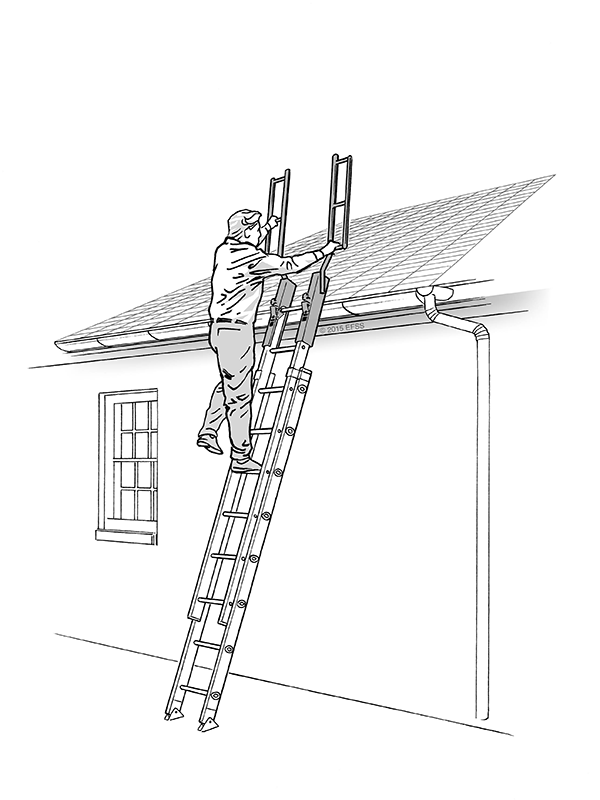
THREE POINT CONTROL- HATCHGRIP FOR ROOF HATCH
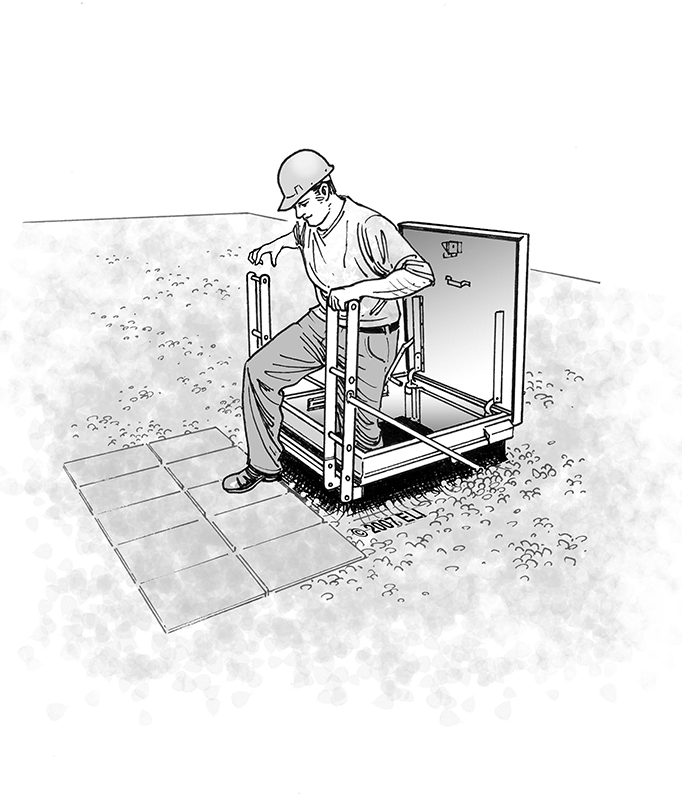
THREE POINT CONTROL-GRABSAFE FOR FIXED LADDER
